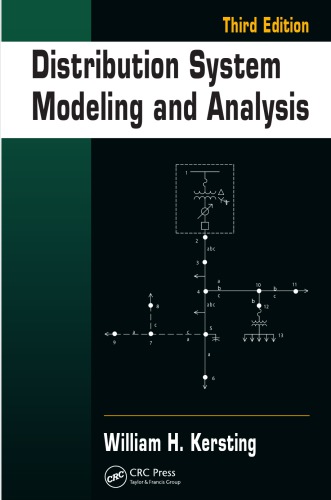

Most ebook files are in PDF format, so you can easily read them using various software such as Foxit Reader or directly on the Google Chrome browser.
Some ebook files are released by publishers in other formats such as .awz, .mobi, .epub, .fb2, etc. You may need to install specific software to read these formats on mobile/PC, such as Calibre.
Please read the tutorial at this link: https://ebookbell.com/faq
We offer FREE conversion to the popular formats you request; however, this may take some time. Therefore, right after payment, please email us, and we will try to provide the service as quickly as possible.
For some exceptional file formats or broken links (if any), please refrain from opening any disputes. Instead, email us first, and we will try to assist within a maximum of 6 hours.
EbookBell Team

4.4
12 reviewsUpdated to reflect the latest changes and advances in the field, Distribution System Modeling and Analysis, Third Edition again illustrates methods that will ensure the most accurate possible results in computational modeling for electric power distribution systems. With the same simplified approach of previous editions, this book clearly explains the principles and mathematics behind system models, also discussing the "smart grid" concept and its special benefits. However, this volume adds a crucial element not found in previous editions. The first two books developed models for all components but focused less on how to actually implement those models on a computer for planning and for real-time analysis. This book includes numerous models of components and several practical examples, to demonstrate how engineers can apply and customize computer programs to help them plan and operate systems. It also covers approximation methods to help users interpret computer program feedback, so they recognize when a result is not what it should be. Another improvement is the book's earlier introduction (in chapter 4) of the modified ladder iterative technique. The author explains the need for this method--which is used in most distribution analysis programs--detailing how it is applied and why it is among the most powerful options. Concluding with a detailed summary of presented topics that readers have come to expect, this edition provides useful problems, references, and assignments that help users apply Mathcad® and WIndmil programs to put their new learning into practice. An invaluable tool for engineering students and professionals worldwide, this book explores cutting-edge advances in modeling, simulation, and analysis of distribution systems that can ensure the continued dispersal of safe, reliable energy.Watch William H. Kerstig talk about his book at: http://www.youtube.com/watch?v=qmlDiH1ntuE.